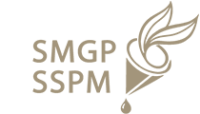Gabapentin Withdrawal
10 Minutes
CONTENTS
Gabapentin is a famous anticonvulsant drug used to manage nerve pain and seizures. A withdrawal may occur if you have been using it for some time, either to manage a medical condition or recreationally. This withdrawal can occur in as little as 12 hours and may last up to 10 days, inducing extremely uncomfortable physical and mental symptoms.
Gabapentin is not currently labelled as a controlled drug due to its little potential for dependence or addiction. The prescriptions for gabapentin have significantly increased over the past decade, with a consequent uptick in its illicit abuse and withdrawals.
While gabapentin is often used to manage seizures, fibromyalgia, and other types of nerve pain, it can sometimes lead to serious side effects. To ensure that it is not putting you at any excessive risk, scheduling regular visits with a doctor is essential. The long-term use of gabapentin comes with a couple of health warnings which include:
- Risk of a severe allergic reaction that may affect multiple organs, including kidneys and liver.
- The symptoms of an allergic reaction include fever, unusual bruising, swollen and painful lumps in the armpit, neck, and groin, and yellowing of eyes and skin.
- Vision changes and impairment of motor skills may affect how you perform daily tasks.
- Severe agitation, irritability, nervousness, hostility, or restlessness. Using it can worsen pre-existing depression and may lead to suicide ideation.
- Enhancement of the sedative effects when combined with alcohol and other CNS depressants.
If you develop one or more of the side effects mentioned above, it is imperative to stop using the medication right away. However, if you have been consuming gabapentin for a long time, ceasing its use in cold turkey may not be safe and may lead to painful withdrawal symptoms. To ensure that you do not develop these symptoms or can manage them if they occur, getting a detox treatment is highly recommended.
Someone who has been taking gabapentin at a dose prescribed by a doctor and doesn’t have a history of substance abuse is less likely to develop any withdrawal upon cessation. However, higher doses and coexisting substance addiction can develop tolerance in these individuals. This tolerance forces them to keep using more gabapentin to get the desired effects, eventually leading to physical dependence. Halting the use of gabapentin after developing a dependence can temporarily disorganise the brain.
Withdrawal symptoms soon begin to appear, primarily within 12 hours of the last dose and include:
- Restlessness
- Agitation
- Confusion
- Disorientation
- Anxiety
- Body/stomach pain
- Headache
- Restless limb movements
- Light sensitivity
- Heart palpitations
- Sweating
- Muscle twitching
- Nervousness
An individual who ceases gabapentin consumption without proper tapering can expect to develop withdrawal symptoms in as little as 12 to 48 hours after the last dose. While the timeline for this withdrawal may vary from one individual to another, a general overview is given below:
- First 12 to 24 hours: Moderate withdrawal symptoms begin to set in, such as headache, shaking, sweating, and palpitations.
- Day 2 to 3: The most severe withdrawal symptoms hit around day 3 and usually include hallucinations, disorientation, restlessness, and fever.
- Day 4 to 5: By day 5, most symptoms begin to subside, but some of them, like anxiety and confusion, may persist for some time.
Studies assessing the gabapentin withdrawal timeline are mostly limited to the first ten days of coming off this medication. However, in some instances, individuals may continue to experience these symptoms beyond this time. This condition may require professional management with medications and other treatment modalities known as post-acute withdrawal syndrome.
Since most gabapentin abusers simultaneously use other drugs to enhance its effects, they are most likely addicted to it and other substances, like cocaine or opioids. Stopping gabapentin in such circumstances can be best managed in an addiction rehab dealing with polydrug abuse and its mental, physical, and social effects.
Most treatment plans focused on gabapentin withdrawal side effects begin with a detoxification process. This process occurs under the supervision of trained staff that constantly monitors the clients and provides medical and emotional assistance when needed. Once the detox process is completed, most facilities encourage clients to continue their addiction treatment by transitioning them into a rehabilitation program to maintain sobriety and prevent relapses.
In rehab, clients can learn essential life skills to support sobriety while addressing the social, psychological, and behavioural issues associated with gabapentin dependence. Most experts advise continuing addiction treatment for at least 90 days to benefit the most and remain sober for years to come. A 90-day-long plan or more is considered a long-term treatment programme and typically includes the following elements:
- Behavioural therapy
- 12-step support group and therapy
- Individual and group counselling sessions
- Gender-specific programming
- Relapse prevention care
- Chemical dependency education
- Holistic modalities, such as yoga, meditation, and acupuncture
- Psychotherapy
- Other miscellaneous therapies, like art therapy, animal-assisted therapy, music therapy, and more
A good Gabapentin withdrawal programme must have a multidisciplinary team trained to deal with recovery’s psychological, medical, and physical aspects. Because it is common to co-use gabapentin with other drugs, choosing a facility that simultaneously treats other substance use disorders is particularly important. Most gabapentin abusers often suffer from underlying mental health disorders, like anxiety and depression. Hence, facilities offering dual diagnosis treatment can maximise the odds of success for such users.
Some other factors to consider while choosing a rehab for gabapentin withdrawal include the following:
Accreditation
Find a treatment rehab accredited by the national regulatory authorities, such as the Joint Commission, that guarantees the standard of care.
Treatment Options
A good rehab for gabapentin addiction and detox offers various treatment options in a safe, supervised, and supportive environment. These programmes include both inpatient, outpatient, long-term, and short-term plans with adequate aftercare planning for maintaining sobriety. Moreover, these programmes must have experienced staff to help you overcome gabapentin abuse.
Location
Carefully choose a treatment facility according to its location. While some people prefer choosing the one close to their homes, others heal better in a far-off rehab, away from all the triggers.
Cost
Cost is one of the significant factors in determining the right rehabilitation centre. Look for a rehab that accepts your insurance or offers other modes of payment, such as scholarships, grants, or a sliding scale fee.
Success Rates
Carefully analyse the success rates of rehab by checking its online ratings and client testimonials.
Duration of Treatment
A good rehab should offer programmes of varying duration, depending on your circumstances.
Staff-to-patient Ratio
A low staff-to-patient ratio ensures easy and timely access to the staff members to fulfil your needs. This aspect is essential if you wish to undertake a residential or inpatient programme.
FAQs
Does gabapentin cause constipation?
Yes, using gabapentin can cause constipation; however, it is one of this medication’s lesser common side effects. Moreover, the intensity of constipation also varies depending on your consumption dose. This constipation is usually easily manageable with dietary changes and laxatives.
How long does gabapentin stay in the system?
The amount of time a medication stays in the system depends on its half-life. The half-life of gabapentin is around 5 to 7 hours in individuals with normal kidney function. Based on this duration, gabapentin persists in the body at detectable levels for 25 to 35 hours. In people with impaired kidney function, this duration may prolong up to 52 hours, leading to a risk of overdose and other complications.
What causes gabapentin withdrawal?
Gabapentin affects the brain’s gamma-aminobutyric acid (GABA) levels. By downregulating the effects of GABA, it sedates the brain to produce calming and painkiller effects. Over time, the brain becomes dependent on this drug for experiencing these modulations and starts craving it in as little as three weeks. Once this point is reached, stopping gabapentin cold turkey can force the body to respond to the absence of this drug by producing severe side effects, known as withdrawal. These symptoms may be harmful or highly deadly, depending on how much gabapentin you took and for how long.
Gabapentin is not considered a controlled substance; however, using and/or stopping without a doctor’s recommendation can prove dangerous. Mixed with other medications, like opioids, it can even lead to a fatal overdose.
Can I try weaning off gabapentin on my own?
Many people dependent on gabapentin may attempt to come off this drug on their own at home. While it is possible to accomplish it, experts do not recommend it due to a very high risk of seizures and other gabapentin withdrawal symptoms. The correct way to stop using this medication is by gradually reducing its dose to the point where you no longer require it. This process is best performed in a detoxification centre under the supervision of experts. These detox experts also determine the proper dose to taper off gabapentin based on your response to it. Moreover, they can also manage any complications and symptoms that may arise during the process to make it as less comfortable as possible.
What is meant by tapering off gabapentin, and how can I do it?
A taper refers to a process in which the daily dose of a particular medication is gradually reduced. Tapering helps people manage their withdrawal symptoms by giving the body a chance to adjust itself to the progressively reducing medication dose slowly. There are no set medical guidelines regarding gabapentin taper, as the process usually varies depending on how each individual responds to it. However, some sources suggest cutting 300 mg of gabapentin every four days. A sample schedule for tapering gabapentin is mentioned below:
Day one to four: 900 mg per day
Day five to eight: 600 mg per day
Day nine to twelve: 300 mg per day
Day thirteen: Stop
Remember that the schedule mentioned above is just a generic sample. For a schedule tailored to your needs, it is best to speak with a detox specialist.
HOW THE BALANCE CAN HELP WITH Prescription Drugs
The Balance RehabClinic is a leading provider of luxury addiction and mental health treatment for affluent individuals and their families, offering a blend of innovative science and holistic methods with unparalleled individualised care.
A UNIQUE METHOD TREATING Prescription Drugs
a successful and proven concept focusing on underlying causesOur program consists of treating only one client at a time individually designed to help you with all the problematic aspects of your life. All individual treatment sessions will be held at your private residence.
more infoYour program is designed based on your personal needs. The team will exchange daily information and adjust the schedule as we go. Our therapists will work with you treating the root causes and not just the symptoms and goes beyong your stay to ensure lasting success.
more infoOur biochemical imbalance can be affected by diet and stressful life events, but it often goes back to genetics and epigenetics. We do specific biochemical laboratory testing to determine an individual’s biochemical imbalance. Combining the results of the lab tests with anamnestic information and clinical tests, we prescribe an individualized and compounded vitamin, mineral, nutrient protocol to help recover from various disease states.
more infoOur experts combine the best from psychological treatment, holistic medicine to support you individually and providing complementary therapies all coordinated from one source working complementing each other integrative.
more infoUsing latest cutting-edge technology-based therapies such as Neurofeedback, tDCS, and SSP, we can track the biological patterns of your body, giving us valuable insight into your health and well-being as well support your brain and body performance and recovery with neuromodulation.
more infoComplex trauma is often a key factor to distress mental and physical state. The Balance provides a safe space along integrated trauma treatment methods to enable healing.
more infoPrescription Drugs TREATMENT LASTING APPROACH
0 Before
Send Admission Request
0 Before
Define Treatment Goals
1 week
Assessments & Detox
1-4 week
Psychological & Holistic Therapy
4 week
Family Therapy
5-8 week
Aftercare
12+ week
Refresher Visit
Prescription Drugs Insights
latest news & research on Prescription Drugs
Fentanyl Poisoning
Opioid toxicity, including fentanyl poisoning, can lead to severe side effects and potentially life-threatening issues that develop immediately after consuming the high dose
read moreMogadon
Addiction to Mogadon can develop over time, and it's important to be aware of the warning signs
read moreDiazepam Withdrawal Symptoms
A diazepam withdrawal can be excruciating and draining, even dangerous in some cases. Suppose you are addicted to diazepam and wish to discontinue it
read moreAccreditations

































































